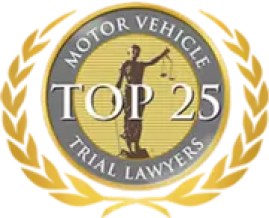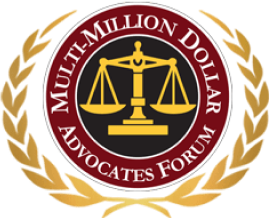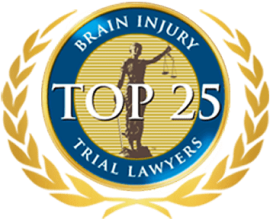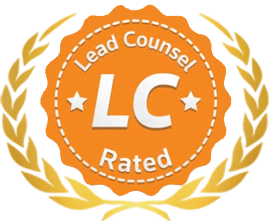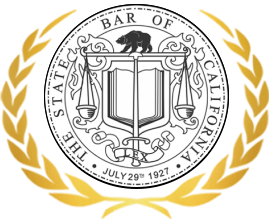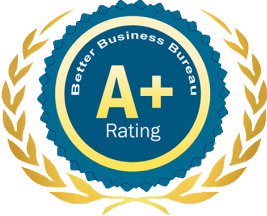Table of Contents
A hit-and-run crime occurs when a person does not stay at the scene of a motor vehicle accident and provide all other people with their personal information or render reasonable assistance. What happens with a hit-and-run accident in California? Well, like most states in the country, California requires drivers to stop after collisions.
A hit-and-run offense can be a misdemeanor or a felony, usually depending on whether other people suffer injuries or death. What happens with a hit-and-run accident in terms of legal consequences? Misdemeanor cases are usually limited to property damage, while injuries and death lead to felony charges.
People who have been struck by hit-and-run drivers can be left in a very difficult position when it comes to seeking compensation because it may be possible that a negligent driver cannot be located. What happens with a hit-and-run accident when the driver is not found? In such situations, people can seek compensation from their own insurance companies, but people need to understand that insurers do not just willingly give money to anybody seeking it.
It is critical for any person who suffers injuries or whose loved one is killed in a hit-and-run accident to retain legal counsel quickly. It will be important to have a skilled personal injury lawyer skilled in hit & run accidents at Arash Law, whose talented team is managed by famous attorney Arash Khorsandi, Esq., handling every aspect of your case so you can know that you are working toward a real resolution that will benefit you.
Hit-and-Run Law Under California Vehicle Code § 20002

A misdemeanor hit-and-run conviction is punishable by up to one year in jail, up to $1,000 in fines, restitution to the victims for any property damage, and 2 points on a person’s California driving record. People may have defenses in these cases, such as when a person is involved in an accident that causes no damage.
When it comes to criminal charges, felony charges are usually reserved for cases of injuries or death.
When an accident causes only property damage, misdemeanor charges are usually the result, but California Vehicle Code § 20001 is the state law relating to felony charges. When it comes to accidents in California, California Vehicle Code § 20002 again stipulates that a person must locate and notify the owner of the damaged property. Upon locating that owner, the person must:
- Upon request, present their driver’s license and vehicle registration.
- Upon request, present the current address of the driver and the owner.
- Leave a note in a conspicuous place with one’s address information and explain the circumstances of the accident when the owner of another vehicle or property cannot be located.
California Vehicle Code § 16025 further requires all drivers involved in an accident to exchange the following information:
- Driver’s name and current residence address
- Driver’s license number
- Vehicle identification number
- The current residence address of the registered owner
- Evidence of financial responsibility
There are numerous examples of hit-and-run accidents in California. The most common situation is a collision with another car in which the other vehicle simply flees the scene, but these accidents can also involve people striking fixed objects and leaving the scene or people hitting parked cars and not leaving their information behind.
A person accused of causing a hit-and-run needs to understand that there are multiple possible defenses against these kinds of charges. For example, a person can claim an accident caused no property damage, an individual can claim they did not know they were involved in a collision or a person can have been misidentified as an alleged offender.
Hit-and-Run Penalties
If you are involved in a hit-and-run accident in California, you may face serious penalties. What happens with a hit-and-run accident depends on the circumstances of the accident, but in general, misdemeanor hit-and-run offenses under California Vehicle Code § 20002 are punishable by up to one year in jail, up to $1,000 in fines, restitution to the victims for any property damage, and 2 points on a person’s California driving record. Judges may sentence people to summary probation in lieu of jail time.
To prove a person is guilty of this offense, a prosecutor will need to prove that an alleged offender was involved in an accident while driving a motor vehicle, the accident caused damage to another party’s property, the alleged offender knew that they had been involved in the accident that caused property damage or knew from the nature of the accident that property was likely damaged, and the alleged offender willfully failed to immediately stop at the accident scene and provide the owner or person in control of the damaged property with the name and current address of the driver or vehicle owner.
People who do not own the motor vehicles they are driving still have a duty to provide information about the vehicle owner. California takes failure to notify other parties about ownership very seriously.
California Vehicle Code § 20002 does not require people to exchange insurance information, but a section under California Vehicle Code § 16025 does require it. The state law specifies that a violation is punishable by a $250 fine.
California Vehicle Code § 20002 prohibits leaving the scene of an accident and not identifying yourself to other parties involved when an accident results in injuries or death. The bottom line remains that there is a much higher burden placed on people who cause accidents leading to injuries or death because there are parties that require help.
What Constitutes a Hit & Run, and What Happens with a Hit-and-Run Accident?
CALCRIM No. 2150 are the standard jury instructions for Failure to Perform Duty Following Accident: Property Damage under California Vehicle Code § 20002. The instructions state that, to prove that an alleged offender is guilty of this crime, the state must prove that:
- While driving, the alleged offender was involved in a motor vehicle accident.
- The accident caused damage to someone else’s property.
- The alleged offender knew that they had been involved in an accident causing property damage or knew from the nature of the accident that it was probable that property had been damaged.
- The alleged offender willfully failed to perform one or more of the following duties:
a. Immediately stop at the scene of the accident.
b. Immediately provide the owner or person in control of the damaged property with their name and current residence address (as well as the name and address of the owner of the vehicle they were driving). If convicted of this crime, “What Happens with a Hit-and-Run Accident”, is that the individual may face up to one year in jail, up to $1,000 in fines, restitution to the victims for any property damage, and 2 points on their California driving record. It is important to note that California takes failure to notify other parties about ownership very seriously.
Additional Hit-and-Run Penalties
For misdemeanor hit-and-run convictions, legal penalties can include up to 6 months in the county jail and a fine of up to $1,000. Judges often order probation for three years and require people to complete community service.
Alleged offenders can also be ordered to pay restitution to victims for damages to their property. Convictions can also lead to two points being added to your California DMV record and cause your insurance to increase.
When a hit-and-run crime is a first offense without alcohol involved, California Penal Code § 1377 allows for a “civil compromise.” Under this resolution, a hit-and-run charge can be dismissed after a person fully compensates the victim for the damages to their property.
Related Hit-and-Run Offenses
Hit-and-run crimes in California often have the potential to involve many other criminal offenses. In addition to the criminal penalties established under California Vehicle Code § 20002, other California offenses may include what follows.
Felony Hit-and-Run, California Vehicle Code § 20001
California Vehicle Code § 20001 defines the crime of felony hit-and-runs. It makes it a felony for a driver to flee the scene of an accident when another person is killed or has a serious injury.
Drivers are expected to stop and give reasonable assistance to injured people. A violation of California Vehicle Code § 20001 is known as a wobbler offense, meaning it can be charged as either a misdemeanor or a felony.
If charged as a misdemeanor, the crime is punishable by imprisonment in the county jail for up to one year. If charged as a felony, the offense is punishable by up to three years in state prison.
Driving Under the Influence (DUI), California Vehicle Code § 23152
The California DUI law makes it a crime for a person to operate a motor vehicle while they are under the influence of drugs or alcohol. The phrase under the influence means that a driver’s physical or mental abilities are impaired to the extent that they can no longer drive, as well as a cautious sober person.
California allows motorists to be prosecuted for this offense even if their blood alcohol concentration (BAC) is below 0.08 percent. First, second, and third offenses are charged as misdemeanors. Penalties for DUI convictions can include:
- Probation
- Fines
- DUI school
- Driver’s license suspension
Driving Without a License, California Vehicle Code § 12500(a)
It is illegal for a person to drive in California without a valid driver’s license. A driver’s license does not have to be from California but must be from a jurisdiction as long as it was issued by the state or country in which the driver resides and it is currently valid for the type of vehicle the driver is driving.
Driving without a valid license is another wobbler offense. In this case, a person can be charged with a misdemeanor or a non-criminal infraction.
As an infraction, driving without a license carries a potential fine of up to $250. As a misdemeanor, it is punishable by up to six months in county jail or a fine of up to $1,000.
DUI Causing Injury, California Vehicle Code § 23153

- The alleged offender drove a vehicle.
- When they drove a vehicle, the alleged offender was under the [combined] influence of alcohol, a drug, or alcohol and a drug.
- While driving a vehicle under the influence, the alleged offender also committed an illegal act or neglected to perform a legal duty.
- The defendant’s illegal act or failure to perform a legal duty caused bodily injury to another person.
Driving on Suspended License, California Vehicle Code Section § 14601
California state law provides that a person cannot drive a motor vehicle at any time when their driving privilege is suspended or revoked. A person convicted for this offense can be punished by imprisonment in a county jail for up to six months and by a fine of up to $1,000, although if an offense occurred within five years of a prior offense that resulted in a conviction of a violation of this section, it is punishable by imprisonment in a county jail for up to one year and a fine of up to $2,000.
What Drivers Should Do After Accidents
California Vehicle Code § 20001 establishes that any person involved in a motor vehicle accident must immediately stop their vehicle as soon as possible at the nearest location. The location at which a person stops should not jeopardize the safety of other motorists.
After stopping, the driver will have to do three things:
- Locate and notify the owner or person in charge of damaged property of the name and address of the driver and owner of the vehicle involved.
- Upon locating the driver of any other vehicle involved or the owner or person in charge of any damaged property, upon being requested, present their driver’s license, and vehicle registration, to that person.
- Information presented must include the current residence address of the driver and of the registered owner.
If a registered owner of an involved vehicle is present at the scene, they also, upon request, must present their driver’s license information, if available, or other valid identification to the other involved parties. You also must, without unnecessary delay, notify the local police department of the city wherein the collision occurred. If a collision occurs in an unincorporated territory, you must notify the local headquarters of the Department of the California Highway Patrol.
Situations Involving Unoccupied Vehicles
An additional requirement in these cases concerns situations in which people cannot locate the owners of damaged vehicles or property. In such situations, people must leave notes in conspicuous places on vehicles or other property damaged, giving the name and address of the driver and of the owner of the vehicle involved and a statement of the circumstances thereof.
Misdemeanor Hit-and-Run Defenses
A hit-and-run charge can certainly be an overwhelming situation for most people to deal with, but working with a good criminal defense attorney can help people explore all of their potential defenses against these types of charges. Three of the most common defenses in these cases often include:
- There is a lack of knowledge. – A person needs to know they were involved in a motor vehicle accident for them to be convicted of a criminal offense. When a person does not know they were in a collision, then they cannot be convicted. It can be difficult to prove that you had no knowledge of an accident, however. This defense is more successful in cases of particularly minor damage. It can also work with drivers of larger vehicles.
- You were not the driver. – There can be many situations in which police officers take the owners of registered vehicles into custody for alleged hit-and-run offenses only to learn the owners were not driving at the time of the alleged offenses. In these cases, alleged offenders can present evidence that they were not present at the scenes of accidents when they occurred and another party was driving their vehicle at that time.
- The damaged property was only your vehicle. – When an accident causes damage but only to one person’s vehicle, then there is no way they can be held liable for not reporting an accident that only caused damage to their own vehicle. California hit-and-run laws relate exclusively to harm caused to other parties, so damage to your own vehicle cannot be held against you.
Avoiding Hit-and-Run Charges in California
People need to understand that they should always obey California state law as it relates to motor vehicle accidents to avoid hit-and-run charges. If you are involved in an accident, always make sure to follow all of these steps:
- Stop your car immediately as soon as possible and as close to the scene of the accident as possible.
- Locate the other involved party and provide your name, address, phone number, driver’s license number, vehicle registration, and insurance policy information to the other driver or other parties involved. When you are driving a car that does not belong to you, provide the name and address of the vehicle owner.
- File a police report.
California requires people to file police reports when damage is more than $750, or there is any injury. People are generally safe to assume that most damage will exceed $750.
It is also important for all people to understand that not all injuries result in immediate symptoms, which makes the need for medical attention so critical. You need to have a doctor perform a complete evaluation to ensure your health.
Steps to Take for Parked Cars or Property Damage
Not all hit-and-run cases involve people colliding with other cars that have passengers. Many cases involve alleged offenders striking unoccupied vehicles or other kinds of property.
Whether you strike a mailbox, a parked car, a pet, or any other item, a person will have an obligation to report the damage they caused. It is also important to call the local police to file a report.
Some kinds of property other than motor vehicles can be much smaller and thus much less noticeable when a collision occurs. People can argue against hit-and-run charges when they were unaware they struck something.
10 Things People Should Do After a Hit-and-Run Accident
Here is a list of the 10 things all people should be sure to do following any motor vehicle accident in California:
- Stay calm.
- Never admit fault.
- Collect as much information as possible.
- Take photos and videos of the crash scene.
- Note property damage or injuries resulting from the collision.
- Find witnesses from the scene of the accident and write down their contact details.
- Report a hit-and-run accident to the police as soon as possible.
- Inform your insurance company of the collision and file your claim as soon as possible.
- Seek medical assistance for minor and fatal injuries.
- Find legal representation by speaking to a hit-and-run accident lawyer in Los Angeles at Arash Law, spearheaded by Arash Khorsandi, Esq.
Possible Causes of Hit-and-Run Accidents
People can have all kinds of reasons for leaving the scenes of accidents, and some of the most common causes of these crashes include:
- Distracted driving
- Outstanding warrants
- DUI
- Road rage
- Aggressive driving
- Reckless driving
- Unlicensed driver
- Revoked or suspended license
- Uninsured vehicle
Contact Arash Law to Speak with a California Car Accident Lawyer
When you suffer severe injuries or your loved one is killed in a hit-and-run accident in California, you deserve to have somebody on your side who is fighting to help you recover as much compensation as possible. Led by Arash Khorsandi, Esq., Arash Law has won more than $750 million for its clients, and we handle these cases on a contingency fee basis, meaning you pay nothing upfront and pay nothing at all if we do not win your compensation.
Our team includes more than 100 legal experts and attorneys capable of working to investigate your hit-and-run accident and determine what options you have for recovering compensation. Call (888) 488-1391 or contact us online today to receive a free consultation.
Share this:
- Click to share on Facebook (Opens in new window)
- Click to share on X (Opens in new window)
- Click to share on LinkedIn (Opens in new window)
- Click to share on Reddit (Opens in new window)
- Click to share on Pinterest (Opens in new window)
- Click to share on Threads (Opens in new window)
- Click to share on WhatsApp (Opens in new window)
























